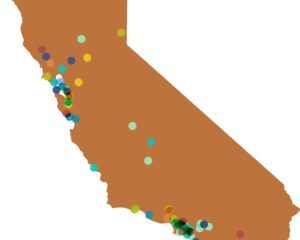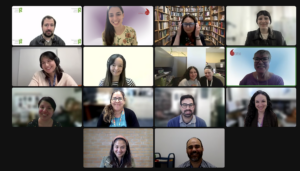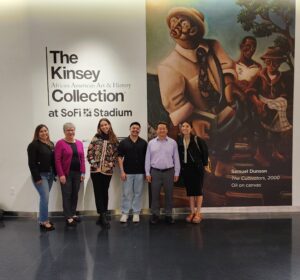
We are happy to introduce our board member, Dr. Genevieve Carpio, Associate Professor in the César E. Chávez Department of Chicana/o and Central American Studies at UCLA and author of Collisions at the Crossroads: How Place and Mobility Make Race. Her research and teaching focus on 20th century US history, (sub)urban history, and theories of place and mobility. In this interview, we hear more about her book, her experiences of being a humanities professor, and her view of Los Angeles as a member of the planning committee of the National Humanities Conference in Los Angeles on November 10-13, hosted by California Humanities and produced by the Federation of State Humanities Councils and the National Humanities Alliance (view our conference invitation video here).
1. Can you tell us more about the key findings in your book Collisions at the Crossroads? What prompted you to write this book?
My book is interested in identifying stories from California’s past that teach us about contemporary struggles over belonging. Part of what inspired this project was witnessing traffic checkpoints across inland Southern California in the 2000s, as well as responses to them by activists. Although erected in the name of stopping inebriated drivers, by and large, they targeted undocumented immigrants in majority Latina/o/x communities. They were held at peak commuting hours, between school getting out and the end of the workday, and often far from bars. That is, they were targeting everyday mobility. It turned the street into a minefield that could go off at any time. But, it did not target everyone equally. It is through practices such as these that we learn who and who does not have access to the street and, by extension, public space, and cultural belonging.
Collisions at the Crossroads: How Place and Mobility Make Race looks across the 20th century to how certain types of movement (i.e., bicycling, driving, even running away) took on racial meaning. Drawing on the histories of a diverse set of people who have called the Inland Empire region home, it seeks to show how mobility —as cultural meaning, technology, site of criminalization, and way of getting around— is a key modality through which race is lived and made. Some of my favorite stories from the text are those of Japanese-descent bicyclists who raced in cycling contests in Riverside at the beginning of the 20th century and those of Mexican-descent drivers who fostered new economic and social opportunities through their automobiles in the Depression-era.
2. What is something you have learned about teaching in the humanities that has surprised (or fascinated) you?
I’ve noticed that students gain a lot of value from projects that ask them to apply humanist traditions, especially those that invite them to draw on their lived experiences or those of their families. Something that I didn’t anticipate—but maybe should have!—is that creative projects like building websites, exhibits, or zines (small do-it-yourself booklets) seem to result in a strong embrace of these first-person elements. For instance, in a zine project I assign when teaching “Introduction to Chicana/o Studies: History and Culture,” students included self-portraits, family photo collages, original poetry, and interviews with family members. One zine even incorporated two interviews on the Chicano Movement as it played out in East Los Angeles. The student conducted one interview in Spanish with their grandfather, who recalled witnessing the Chicano Moratorium, which protested the many Chicanos killed in the Vietnam War. The student conducted the second interview in English with their mother, a graduate of an East Los Angeles high school, who recalled benefitting from the activism of the East Los Angeles Walkouts and subsequent Chicano Studies curriculum at her school. Conversations with students during office hours suggest these types of intergenerational connections may be particularly meaningful for students who are the first in their families to attend college. Through a humanist education, students have found these experiences to validate their family’s collective knowledge and create an opportunity for them to share their classroom experiences with relatives.
3. You are a member of the planning committee for the National Humanities Conference in Los Angeles on November 10-13, hosted by California Humanities and produced by the Federation of State Humanities Councils and the National Humanities Alliance. What do you hope that attendees will learn about Los Angeles and California?
I’m so excited that this year’s National Humanities Conference is being hosted in contemporary Tovaangar (Los Angeles). The conference location speaks to me both personally, as someone who grew up at the very edge of Los Angeles County, and professionally, as somebody who researches and teaches in Southern California.
Since this will be the first in-person National Humanities Conference since the pandemic, my hope is that attendees will reconnect with each other through the unique landscape that is Southern California. As a member of the place-based committee, I’m particularly enthusiastic about sessions held outside the hotel that will allow participants the chance to form connections outside panels, explore the city, and learn about place-based humanities projects. The theme pushes us to consider movement, broadly, as a reflection point in what I think is one of the most dynamic places in the world. I hope that attendees embrace the conference theme, Energy of Motion: Experiencing Change in Kinetic Los Angeles, to grapple with the diverse and nuanced place that is Los Angeles, from the exceptional opportunities its kinetic nature creates for collaboration to the ways it has been a site of friction and conflict that call for new approaches to humanist challenges.




